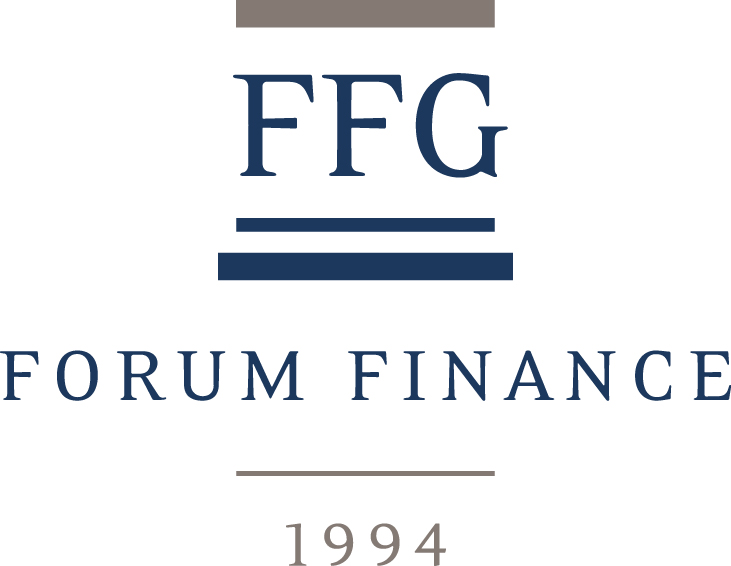Newsletter | August 2025
The US Federal Reserve held interest rates steady; speculation persisted regarding potential rate cuts in the fall.
5.8% PERFORMANCE OF THE MAGNIFICENT SEVEN INDEX IN JULY
Investment perspective
Last month was characterised by fragile global economic resilience, buoyant but volatile financial markets, and ongoing political efforts to resolve regional conflicts. Growth risks remain skewed to the downside, particularly if trade uncertainties worsen or fiscal trajectories prove unsustainable. Indeed, persistent uncertainty over trade policy and high tariff levels continue to weigh on the long-term outlook, with the expected decline in the share of global trade in output. The US economy is showing signs of slowing down, with growth now projected to be between 1.3% and 1.9%, depending on the source. Meanwhile, inflation is staying elevated at around 3.0% per annum. A pronounced “risk-on” sentiment emerged during the month as several new trade agreements were announced. This boosted global equities and pushed up bond yields, particularly in the US. Short-term US Treasury yields rose sharply, by around 24 basis points, reflecting the expectation of a delay in Federal Reserve interest rate cuts. Although the European Central Bank and the US Federal Reserve both held policy rates steady, markets continued to price in cuts (with the Fed expected to act in September), adding to yield curve volatility. Meanwhile, major US equity indices reached new all-time highs, driven by robust earnings from the technology and AI sectors, as well as renewed investor confidence following adjustments to trade policy. The US dollar experienced significant volatility in July. After starting the month weakly amid softer inflation and dovish Fed remarks. The dollar rebounded midway through the month as stronger economic data and cautious language from the Fed reduced expectations for imminent rate cuts. By 30 July, the dollar index had rebounded to around 103.6 from an earlier four-month low, but it remained down by around 8–11% year to date on a trade-weighted basis. Major currency pairs remained within their established ranges, while the yen experienced periods of strength as the Bank of Japan suggested potential changes to its policies. July was a dramatic month for copper. Prices on New York’s COMEX soared in early July, rising by over 13% at one point, after President Trump unexpectedly floated the idea of a 50% tariff on copper imports, which far surpassed market expectations. In a stunning reversal, however, refined copper was abruptly exempted from the tariff until at least January 2027, causing the premium to evaporate and leaving US warehouses with stocks at a 21-year high.
Investment strategy
Despite the announcement of new trade agreements, particularly with Japan, which will see a 15% tariff imposed on all products imported into the United States, followed by the European Union with an identical rate, fears of a global economic slowdown remain central. The erratic announcements regarding the final level of customs duties have caused more uncertainty, which is a key factor for markets and investment, than can be seen in the published data to date. However, the latest job creation figures, particularly the revised estimates for recent months, serve as a stark reminder that difficulties may lie ahead for the US economy. The latest inflation figures have also been reassuring, but the concrete effect of the tariffs remains to be seen. Against the backdrop of a potential economic slowdown and stable inflation of around 3%, the Fed has chosen to maintain the status quo. J Powell’s inflexible stance has further damaged his already poor relationship with Donald Trump. The US President is demanding a rate cut to ease the burden of growing US debt — a position also held by David Warsh, who is tipped as a potential replacement for Powell as head of the US central bank. Despite these uncertainties, the markets are optimistic, with signs of euphoria in some cases. This does not yet call into question our risk-on positioning. However, we remain alert to a potential reversal in market dynamics and sentiment, which could indicate the need for greater caution.
Replacing Powell Would Not Guarantee Lower Short-Term Rates
Portfolio Activity/ News
Throughout July, we largely maintained our risk-on stance. As a reminder, this was characterised by a preference for credit over government bonds in the fixed-income segment and a resolutely growth-oriented approach to equities. This approach served us well while the credit market remained buoyant. However, we continued to diversify the bond portion by introducing positions in bonds issued by financial companies, such as banks and insurance companies. This allowed us to capture the excess yield resulting from the subordination of the securities. We reiterate our cautious stance on long-term government bonds (10+ years). In this segment of the bond market, we are maintaining a position with an average maturity of between five and ten years. The average interest sensitivity of our bond portfolio is approximately 4.5 years. We maintain a favourable bias towards technology-related sectors, especially those that benefit from artificial intelligence, in all regions. In terms of the geographical distribution of our equity holdings, we have increased our exposure to US equities slightly, while maintaining significant exposure to European and emerging market equities. Despite the uncertainty caused by trade tensions, the latter have achieved impressive growth since the beginning of the year. Within our alternative investment portfolio, while recent performance has been mixed following a strong first half of the year, we maintain a high level of conviction in our strategic exposure to key alternative investment trends and strategies.
Download the Newsletter
